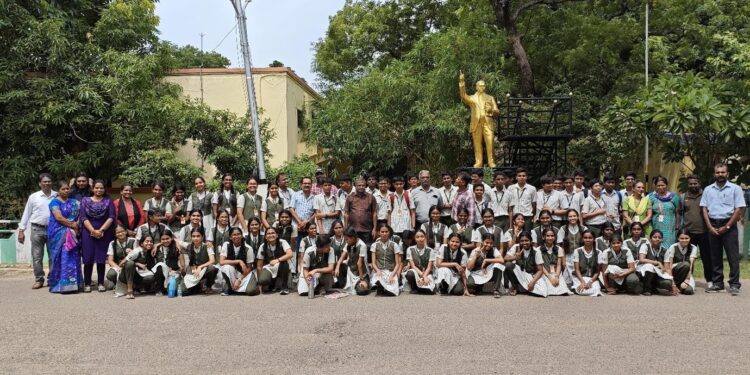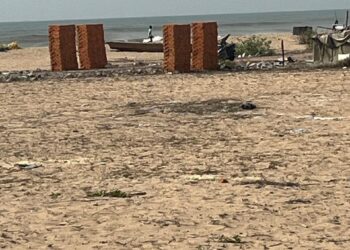By Mirudhula Tholkappian, Manthan Vidyashram, Kottivakkam.
Students of Grades 9 and 10 of Manthan Vidyashram visited the Food Corporation of India, Avadi as their field visit. This article explores the work done at the FCI that ensures that every Indian has three meals a day, including soldiers stationed at the borders of our country. Armoured Vehicles and Ammunition Depot, India (AVADI) is indeed a fitting location for this essential statutory body.
When the students reached the FCI, they were given a brief introduction to the processes conducted and why they were so important. The discussion started with a reference to the Bengal Famine of 1943-44 and how the FCI was helping to prevent any such crisis from happening again. It was formed in January 1965 after the Food Corporation Act of 1964. With its first headquarters at Thanjavur, it has since shifted to Chennai and then to New Delhi. It now has around 2000 depots. The fast-increasing population of India is supplied with enough food at all times due to the tireless work of the FCI. Its work was thrust into the limelight during the COVID pandemic. Much like the law enforcement and emergency services, the FCI was working throughout the pandemic with many employees even contracting the virus. However, the pandemic also caused the FCI to receive the recognition it is due, when the Prime Minister announced a new scheme of distributing free grain to those below the poverty line.
The central government fixes the minimum support price (MSP) and provides incentives for farmers to grow enough crops.
Students were also taught the vital workings of supply chain management, which ensures that the crop reaches the consumers.
The first role the FCI plays is the procurement of the grains. This is of two kinds – centralised and decentralised. Centralised procurement is handled by the government while decentralised procurement involves getting and supplying the local variety of grain for locals.
The second stage involves the storage of the grains. The grains stored include rice and wheat. Rice is of two varieties – raw and boiled. Differences in the length-to-breadth ratio of the boiled rice give rise to another separation – Grade A rice and common rice. Officials explained to the students the right way to count the number of sacks in a warehouse. Warehouses are ventilated to reduce humidity and heat inside. Pest infestations are dealt with in two ways – using chemicals and spraying. Damage by pests is usually controlled within a maximum of 48 hours, the duration varying due to the availability of labour. To ensure food supply even during natural calamities, there is a four-month buffer supply that is constantly replenished. The Avadi FCI is the second largest in India with a capacity of 1.75 lakh metric tonnes and 69 godowns.
The third part of the process is transportation. The FCI and the railways have a crucial partnership. About two-thirds of the goods trains are used for the transportation of grain by the FCI. Labourers are key for transport. Loading and unloading done by them is a vital part of the process. Most grain is directly loaded onto wagons in which they are transported. Railway lines pass through most of this area for easier transport and distribution of grain. About six trains enter every month.
After this informative tour, students were provided with additional information about the Kharif Marketing Scheme (KMS) and the Rabi Marketing Scheme (RMS). Kharif crops like ragi and rice are grown from July to October. Rabi crops like barley and wheat are grown from October to March.
To keep up with technological advancements, the FCI has also digitised to a large extent. Transactions are done online and ration cards are digitised. As part of its journey to become a next-generation organisation, the FCI organised a contest to select its project name, tagline and logo. The contest received a large number of entries. The project was given the name ‘Khadya e-seva’ and tagline ‘Ghar Ghar Anaaj, Khush-hali aur Vikas’, meaning ‘Food e-service’ and ‘Food, prosperity and development to every home’, respectively.
On that note, the trip concluded. The members of the FCI and the students posed for photos as a memento of their shared memories. Students were indeed honoured to be part of the select few who could witness the much-needed work carried out in the FCI.
Hail FCI! Anna Devo Bhava!











